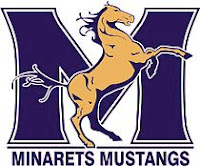Look At All This Muck!

Last year I had my Woodlake students complete a DBQ regarding Progressivism, where they had to argue which 20th century issue they would invest their million dollars into. As always, I had students finish significantly earlier than others so I quickly threw together another project where they had to create a poster describing a current issue that they felt needed attention. This was meant to keep the early finishers occupied, but turned into a project that the students became excited about: Ebola by Mikayla Juvera New iPhone Concerns by Ramiro Padilla North Korea by Henry Pfaff Unfortunately, because of pacing and an upcoming benchmark, we couldn't invest much time into the project, but I wished that one day I could do this project on a big scale. Then a year later, my wish was granted when I was offered my dream job at Minarets High School, a school dedicated to project-based learning. I knew immediately that one of my projects would be focused on muckraking curren...





